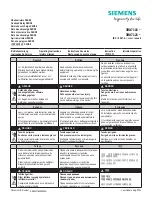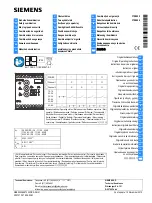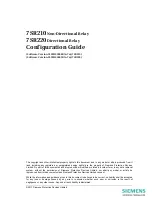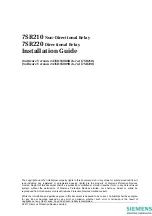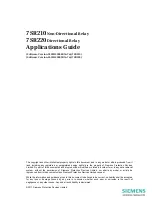
Date & Time
5184-5385 Descr.
Io pretriggering current
Start average current
Io fault current
Trip -20ms averages
Fault capacity Io
Trip -20ms averages
Fault resist Io
Trip -20ms averages
Fault Uo (%)
Trip -20ms averages
Fault Uo (V)
Trip -20ms averages
Io fault angle
0 - 360°
Trip time remaining
0ms – 1800 s
Used SG
1-8
Network GND
Unearthed, Petersen coil grounded, Grounded network
Io prefault current
Start -200ms averages
5.4.6. Intermittent earth fault I0Int> (67NT)
Intermittent earth fault is a transient type of single phase to ground fault where the actual fault
phenomenon lasts about few hundred microseconds. Intermittent earth fault is commonly seen in
Petersen coil grounded (compensated) medium voltage networks. Intermittent earth fault is commonly
thought as only cable network problem but it can occur in overhead line networks as well. The key
point for this type of fault appearance is the compensation of earth fault currents with Petersen coil.
This phenomenon is coming more frequent as utilities are changing the overhead lines to ground dug
cables. Ground dug cables are more reliable than overhead lines considering the possible seasonal
storm damages thus this type of distribution network development is very understandable.
Maintenance costs and power down time of ground dug cable network per yearly bases is signi cantly
less than with overhead line networks. The problem comes from that the increasing amount of cabling
in the network causes dramatic increasing of the capacitive earth fault currents in the distribution
networks. When the capacitive earth fault current in the network increases, distinguishing of the earth
fault current with Petersen coil comes in to the picture.
Problems caused by intermittent earth fault are normally seen in compensated network substations
where during the fault possibly many feeders are tripped simultaneously by earth fault or whole
substation is tripped by residual voltage back-up protection from the incomer. This is typical behavior in
old-fashioned relay protection which is not capable to differentiate in between of normal consistent
earth fault and intermittent earth fault. Since the intermittent earth fault is transient type of fault where
the actual fault is only few hundred microseconds causes the traditional directional earth fault
protection relays to lose the directional sensitivity. When the directional decision algorithms of
traditional relays try to cope with intermittent signals the trip decision result will be totally up to luck.
Typical nding from this type of complete black out substation includes from all protection relays logs
found multiple directional earth fault starts and releases and nally the incomer relay residual voltage
trip. This is the worst case scenario. On the other typical scenario few feeders have tripped in the same
fault including, by luck the correct faulty feeder. In this later case also in all of the relays logs can be
seen the incorrectly started directional earth fault events and releases.
Previously this kind of behavior was commonly ignored and put to mystery category since it might have
happened just once or twice per year and also disturbance recordings were not commonly used in
normal medium voltage substations for veri cation of the fault. When disturbance recorders were
introduced as common feature of the protection relay this phenomena got name and characteristics.
Its unique characteristics require completely different tools for handling than the traditional directional
earth fault protection is capable of handling.
AQ-F255
Instruction manual
Version: 2.00
83
© Arcteq Relays Ltd

































